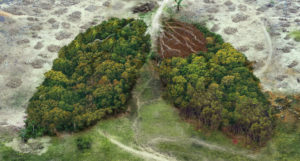By Dr Adriana Blanco Marquizo, Head of the Secretariat of the WHO FCTC
We live in an interconnected world, a fact that has never been as clear as it is now, during the COVID-19 pandemic.
There are very few issues that can be considered simply ‘health problems’, as nearly every aspect of life is connected to other societal, economic and environmental issues. That is why the 2030 Agenda for Sustainable Development is “a plan of action for people, planet and prosperity”, and its 17 goals and 169 associated targets are “integrated and indivisible”. Tobacco control is linked to 67 of the Sustainable Development Goal targets, and is integrated in Target 3.a on strengthening the implementation of the WHO Framework Convention on Tobacco Control (WHO FCTC).
We all recognize the health impact of tobacco, which kills more than 8 million people annually around the globe. We tend to think less frequently about the economic impact of tobacco use on health expenditures and productivity losses, which are equivalent to 1.8% of the world’s annual gross domestic product. What is even less well-known is how tremendously destructive tobacco cultivation and use is for the environment – on land, water and air.
The noxious effects of tobacco on the environment begin with the preproduction process, as massive deforestation occurs to create space for tobacco farming. Once tobacco is harvested, huge quantities of timber are required for drying the leaves. Estimates show that tobacco farming causes up to 5% of global deforestation, with 200 000 hectares of natural wood biomass lost each year.
During production, tobacco crops require large amounts of chemical fertilizers, pesticides and growth regulators that pollute the ground, nearby waterways and aquifers. In terms of health, tobacco cultivation also presents serious hazards for farmers and their families because of the intensive use of pesticides and nicotine poisoning due to the handing of the leaves.
The non-tobacco elements of production, such as filters, carry a burden on the environment, especially when one considers the vast quantities used in the manufacturing of 6 trillion cigarettes annually. Cigarette butts are the most common form of litter, as an estimated 4.5 trillion cigarette butts are thrown away every year worldwide, representing 1.69 billion pounds of toxic trash annually. The United Nations Development Programme already described tobacco as “a threat to our oceans”. Under specific circumstances – such as sunlight and moisture – cigarette filters can break into smaller plastic pieces, containing and eventually leaching out some of the 7000 chemicals contained in a cigarette, many of which are environmentally toxic, and at least 50 are known human carcinogens.
On 17 December 2020, the Regulation (EU) 2020/2151 implementing Directive (EU) 2019/904 of the European Parliament and of the European Council on the reduction of the impact of certain plastic products on the environment was adopted by the European Union. This regulation establishes harmonized labelling specifications for a wide range of products, including, tobacco products with filters, and filters marketed for use in combination with tobacco products, which contain plastics. It shall apply from 3 July 2021.
The labelling shall not obstruct in any way the visibility of the health warnings required by the Tobacco Products Directive on these packages – which, for example, in case of tobacco products for smoking cover 65% of the front and back of packages – and, at the same time, shall not be totally or partially covered by other labels or stamps. The information text of the labelling shall be written in the official language or languages of the Member State(s) where the single-use plastic product is available.
In line with Articles 17 and 18 of the Convention on the Provision of Viable Alternative Activities and Protection of the Environment and its Policy Guidelines, the Secretariat of the WHO FCTC is calling on governments to better regulate tobacco agriculture and to help tobacco farmers worldwide switch to environmentally friendly alternative crop production. This is being encouraged through the use of incentives such as access to credit and by providing training on environmentally friendly practices, among other measures.
The tobacco industry has been lobbying worldwide for policies that exonerate it from any environmental responsibility. But ultimately, tobacco producers should be responsible for liability, economic costs and the provision of information on the environmental impacts of their activities.
In summary, tobacco control should be a major component of any and all effective and holistic environmental protection initiatives.

Dr Adriana Blanco Marquizo, took office as the new Head of the Secretariat of the WHO FCTC in March 2020. She is a medical doctor with a master’s degree in Policies to Prevent Addictions in Children and Adolescents. Over the past two decades, Dr Blanco Marquizo has worked in the region of the Americas, supporting tobacco control activities in many countries, including her home country Uruguay – the first smoke-free country in the region. Before joining the Secretariat of the WHO FCTC, Dr Blanco Marquizo worked at the Pan American Health Organization (PAHO).
Dr Blanco Marquizo has no conflicts of interest to declare.

